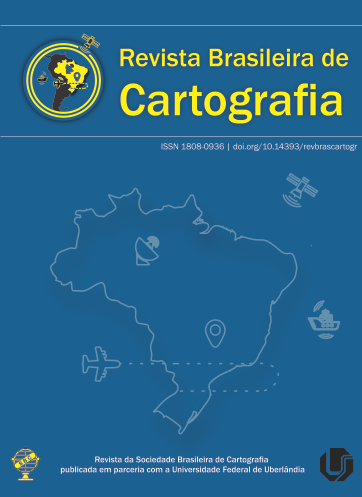Avaliação Qualitativa e Quantitativa da Ferramenta de Pré-seleção Sort para Dados Monofeixe e Multifeixe
Conteúdo do artigo principal
Resumo
Os Levantamentos Hidrográficos (LH) tratam do conjunto de atividades executadas com a finalidade de obtenção de dados do fundo e áreas adjacentes dos oceanos, lagos, rios, portos e outros corpos d’água. Os dados resultantes das sondagens são usados para a modelagem da superfície batimétrica, que por sua vez, permite uma melhor gestão dos recursos hídricos. O presente estudo avaliou a potencialidade da ferramenta Sort para a pré-seleção de dados monofeixe e multifeixe, variando raios de busca na seleção da menor profundidade. Posteriormente foram realizadas análises quantitativas utilizando diferentes softwares e qualitativas, através de modelos digitais, acerca do efeito causado com o crescimento do raio de busca adotado para a pré-seleção. Desta forma, evidenciou-se que o aumento do raio surte efeito tanto para os dados monofeixe, quanto para multifeixe, variando a área e o volume dos respectivos locais de maneira notória, demonstrando assim a importância de se verificar o tamanho do raio antes da realização da pré-seleção dos dados.
Downloads
Detalhes do artigo
Seção
Autores que publicam nesta revista concordam com os seguintes termos:
- Autores mantém os direitos autorais e concedem à revista o direito de primeira publicação, com o trabalho simultaneamente licenciado sob a Licença Creative Commons Atribuição que permite o compartilhamento do trabalho com reconhecimento da autoria e publicação inicial nesta revista.
- Autores têm autorização para assumir contratos adicionais separadamente, para distribuição não-exclusiva da versão do trabalho publicada nesta revista (ex.: publicar em repositório institucional ou como capítulo de livro), com reconhecimento de autoria e publicação inicial nesta revista.
- Autores têm permissão e são estimulados a publicar e distribuir seu trabalho online (ex.: em repositórios institucionais ou na sua página pessoal) a qualquer ponto antes ou durante o processo editorial, já que isso pode gerar alterações produtivas, bem como aumentar o impacto e a citação do trabalho publicado (veja "O Efeito do Acesso Aberto").





